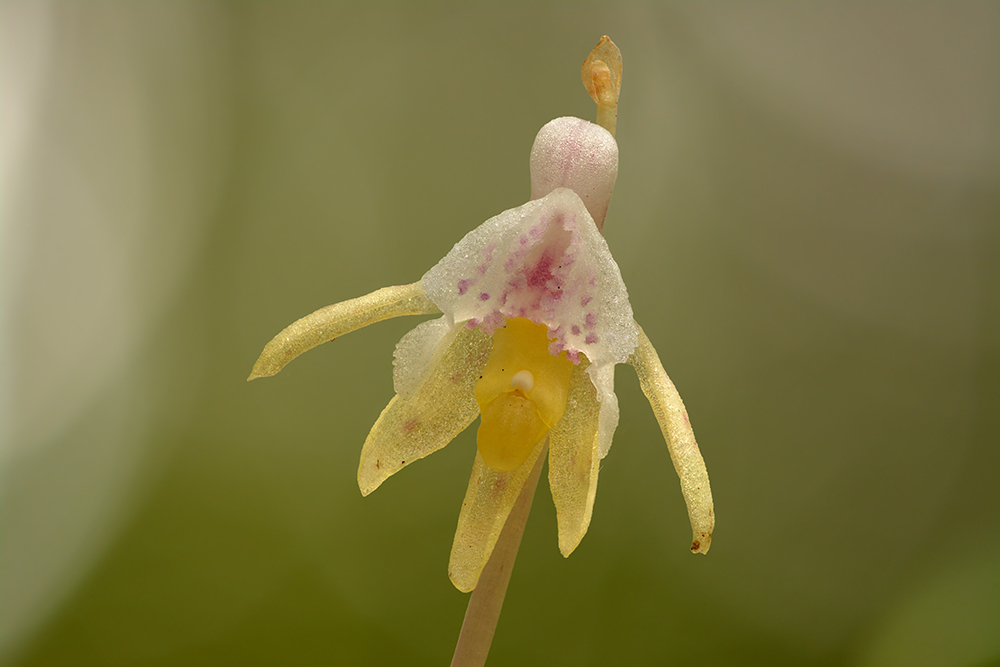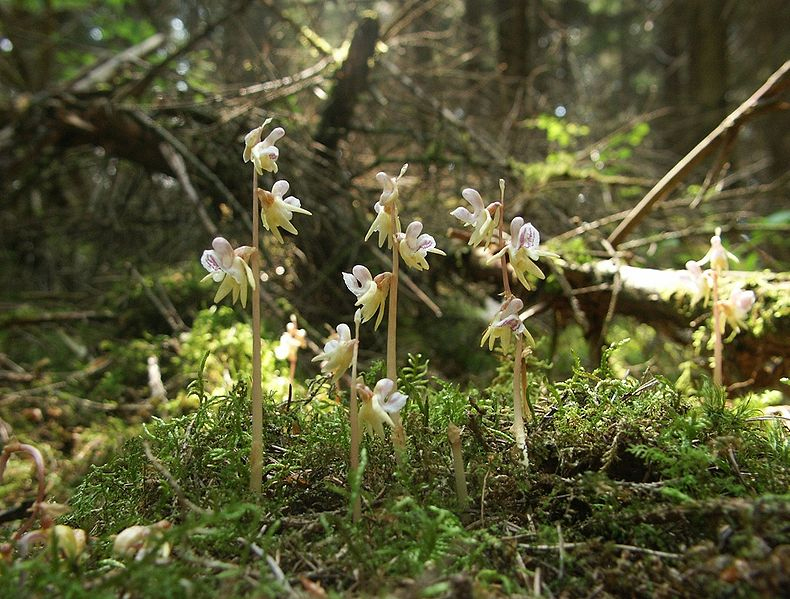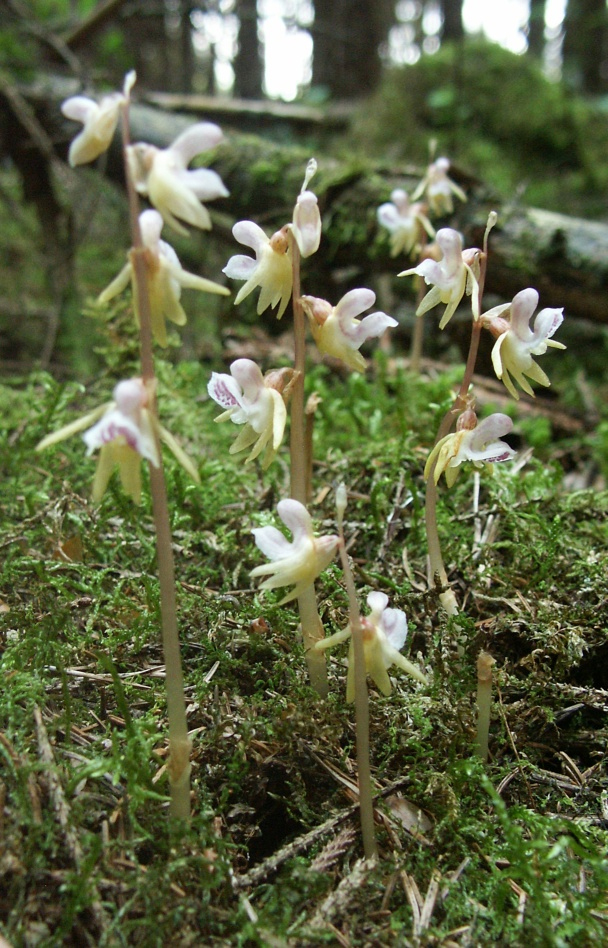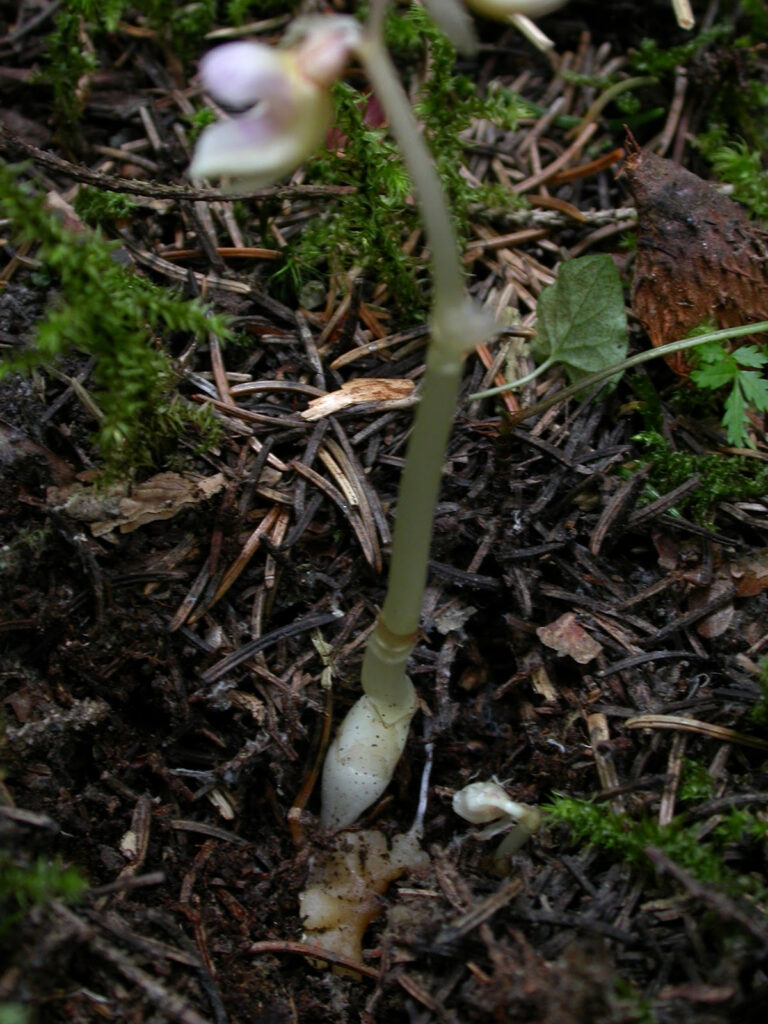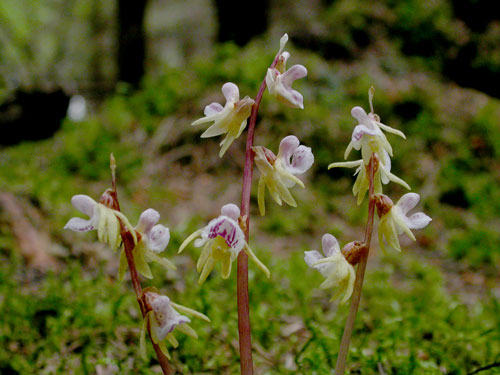Epipogium aphyllum
Ghost Orchid
Epipogium aphyllum, the ghost orchid, is a hardy mycoheterotrophic orchid lacking chlorophyll. It is one of the rarest representatives of Orchidae family.
By Ivar Leidus – Own work, CC BY-SA 4.0, https://commons.wikimedia.org/w/index.php?curid=92763704
Photograph by Wild Orchids UK & Ireland
By Ivar Leidus – Own work, CC BY-SA 4.0, https://commons.wikimedia.org/w/index.php?curid=92763704
It is famous for its unpredictable appearance; in many localities it has been seen just once. It is found in beech, oak, pine, and spruce forests on base-rich soils. It is a rare and critically endangered plant in habitat, and is believed to be extinct throughout much of its former range, although it has been recently confirmed in the United Kingdom (2009), an area where the plants were believed to have gone extinct.
The plants are protected in many locales, and removing the plants from habitat or disturbing the plants, even for scientific study, can be a very serious matter in many jurisdictions. These plants are exceptionally rare and should never be removed from habitat or disturbed.
In 1926 the Welsh botanist Eleanor Vachell was asked by the British Museum to investigate a report of the ghost orchid in England. For many years the Welsh National Herbarium at Amgueddfa Cymru (National Museum of Wales) had only a small rhizome that had been gathered by Vachell on 29 May 1926.
Once thought to be saprophytic, these hardy plants are actually obligate mycoheterotrophs (or epiparasites) that obtain nutrients from mycorrhizal networks involving basidiomycete fungi that are in turn associated with the roots of various species of coniferous trees. They grow from an underground, burrowing stem which lacks chlorophyll and possesses ephemeral leaves that are small scales. The plants only emerge above ground to flower, especially during very wet summers in Western Europe.
These plants harness an array of fungal symbionts across several families, often simultaneously. Analysis of these plants have identified ectomycorrhizal Inocybe species as exclusive symbionts for 75% of the plants in habitat, as well as others (Hebeloma, Xerocomus, Lactarius and Thelephora).[7] The plants also host ascomycete endophytes, which appear to assist the plant in parasitizing some of the plant’s basidiomycete symbionts.
The plants defy cultivation outside of laboratory conditions, as they require not only specific fungal symbionts, but also specific host trees with which these mushroom species form mycorrhizal relationships. Large plants of this species can produce a rather stunning woodland display with up to a dozen flower stalks at once bearing 3–4 flowers each growing out of coniferous leaf litter.
The flowers are most likely pollinated by bumblebees; to reproduce, it produces numerous dust-like seeds that are dispersed by the wind over long distances.
Last recorded in England in 2009 in Herefordshire, it has a long history of disappearance and reappearance, and therefore building itself a reputation of mystery and elusiveness – one that is rightly deserved. Apart from a (decent) number of people old enough to have seen it in Hollowhill Wood in Buckinghamshire in the 1970’s and 1980’s, it has become many peoples’ most wanted species of plant in this region
Most sightings are from the above-mentioned wood in Buckinghamshire, and its neighbour, Pullingshill Wood. Between 1953 and the last flowering event in 1987, Ghost was found in 23 of those 34 years, with a maximum of 25 flowering spikes in any one year. All of those sightings were between the first week of July and the last week of August, though some persisted into September, and even set seed
Other areas in which it has been recorded have been Herefordshire and Shropshire between 1854 and 1910, single occasional sightings of plants collected – accidentally or otherwise, and Oxfordshire between 1924 and 1979, maybe even up to 1994. The flowering period for these has again typically begun in July, but has gone right through to the first week of October. So although there have been very few places Ghosts have been recorded, the records have been spread over a wide time period within each season.
This brings me to the modern site in Herefordshire, close to Hereford itself. Here, in this unlikely setting of mixed tree species planted by the Forestry Commission over various periods, is a deep ditch – a former cart track where a single spike was found on 19th September 1982 by Valerie Coombs (now Richards), and then, in 2009 another single spike was found after much searching by Mark Jannink, on 20th September. On both occasions the plants lasted until the 1st October before being felled by molluscs.
Photograph by Wild Orchids UK & Ireland
Will the events of the two Herefordshire sightings be repeated, where fewer than ten lucky people got to hear? Herein lies the problem, and this question takes me back to the Hufingen population.
The warden’s opinion was that visitor pressure caused the demise of Ghost Orchids in that wood. Whilst it is unlikely to be the sole reason, there is no doubt it will have been a serious contributor. Ghost Orchid primarily reproduces via cotton-like threads that emerge from the rhizomes. These then fatten into new rhizomes and form new flowering spikes. These thin strands, known as “stolons”, creep out horizontally less than a centimetre below the surface, in damp soil. Treading on this soil breaks the stolons and therefore prevents them creating new plants. You can see just how close to the surface all this happens in the photo above, where just a few pine needles (no soil) were carefully removed (then replaced) to reveal what goes on.
Photograph by Wild Orchids UK & Ireland
This page is sponsored by:-
Native Orchids of UK & Ireland
Download free QR Code to this page

